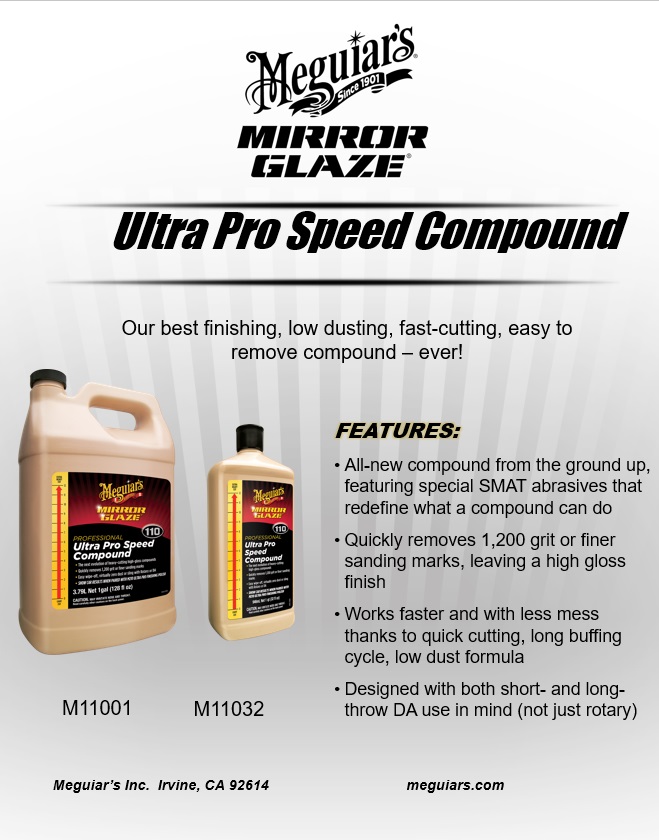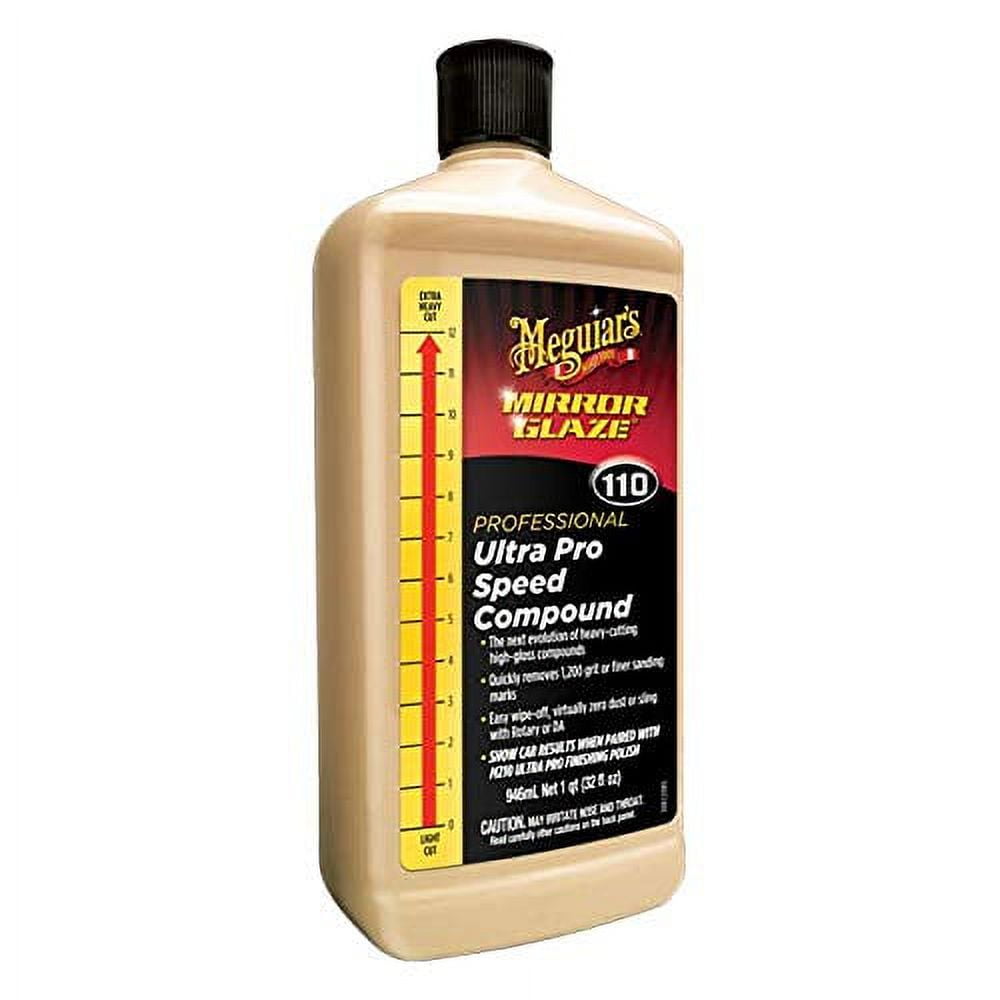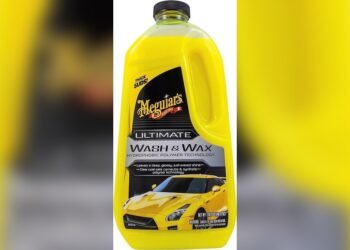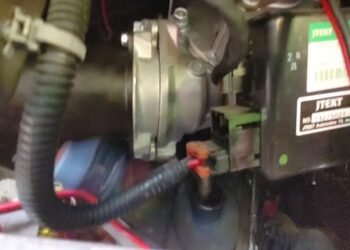When it comes to restoring your car’s paint to showroom shine, choosing the right compound can make all the difference. You’ve probably heard about Meguiar’s 105 and 110 compounds, two heavy hitters in the world of car detailing.
But which one should you reach for to get the best results on your vehicle? Knowing the subtle differences between these compounds can save you time, effort, and frustration. You’ll discover exactly how Meguiar’s 105 stacks up against 110, so you can confidently pick the perfect product for your paint correction needs.
Keep reading to unlock the secret to flawless finishes and make your car look better than ever.

Credit: www.reddit.com
Meguiars 105 Features
Meguiar’s 105 is a popular compound among car detailers. It offers a strong cutting ability with a smooth finish. This product is designed to fix moderate-to-heavy paint defects. It works well for swirl marks, scratches, and oxidation. Its features make it a reliable choice for many users.
Cutting Ability
Meguiar’s 105 has a strong cutting power. It removes moderate-to-heavy paint defects efficiently. The compound works fast to restore the paint surface. It targets scratches and oxidation without being too harsh. This balance helps protect the paint while improving its look.
Working Time
The working time of Meguiar’s 105 is moderate. It allows enough time to work on the paint before drying. This gives users control during polishing. The compound does not dry too quickly or stay wet too long. It suits most polishing machines and hand application.
Dusting Level
Meguiar’s 105 produces a noticeable amount of dust. The dust is easy to wipe away after polishing. This level of dusting is common for compounds with strong cutting power. Users should wear masks or work in well-ventilated areas. The dust does not affect the final finish quality.
Finishing Quality
The finish after using Meguiar’s 105 is smooth and shiny. It reduces swirls and haze effectively. Some light polishing may be needed for a perfect shine. The compound leaves minimal scratches behind. It prepares the surface well for finer polishing steps.
Technology Used
Meguiar’s 105 uses Super Micro Abrasive Technology (SMAT). This technology allows precise cutting with less damage. It uses micro abrasives to correct paint defects gently. The formula balances cutting power and finish quality. SMAT makes Meguiar’s 105 effective and safe for paint.
Meguiars 110 Features
Meguiars 110 offers unique features that make it a strong choice for paint correction. It balances power and finish quality well. This product is designed to deliver effective results without causing extra work.
Each feature of Meguiars 110 helps users fix paint defects with ease. Understanding these features can guide you in choosing the right compound for your needs.
Cutting Power
Meguiars 110 has moderate cutting power. It removes defects like scratches and swirl marks effectively. It works well on medium to heavy paint damage. The cut is strong but controlled, avoiding over-polishing.
Workability
This compound is easy to work with. It spreads smoothly across surfaces. Users can control the polishing speed and pressure easily. It allows enough time to work on the paint without drying too fast.
Dust Production
Meguiars 110 creates moderate dust during use. This dust is easy to clean and does not cause much mess. The dust level is balanced, helping users see the polishing progress clearly.
Finish Results
The finish from Meguiars 110 is glossy and smooth. It removes most swirls and minor scratches. The paint surface looks refreshed and vibrant after polishing. It prepares the paint well for waxing or sealing.
Abrasion Technology
Meguiars 110 uses advanced Micro Abrasive Technology. This tech ensures precise paint removal. It minimizes heat buildup during polishing. The abrasives work evenly, preventing uneven spots or damage.
Performance Comparison
The performance of Meguiar’s 105 and 110 compounds varies based on the type of paint correction needed. Both products excel in specific areas but serve different purposes. Understanding their strengths helps choose the right compound for your vehicle’s condition.
Heavy Defect Removal
Meguiar’s 105 is the preferred choice for removing deep scratches and heavy defects. It cuts aggressively but safely, restoring damaged paint quickly. The 110 is less aggressive and not ideal for heavy defect removal. Use 105 for strong correction needs.
Moderate Defect Correction
The 110 compound works well on moderate defects and light scratches. It provides a smoother finish than 105 and reduces the need for additional polishing. Meguiar’s 105 can also handle moderate defects but may require follow-up polishing for a perfect finish.
Swirl Mark Reduction
Meguiar’s 110 shines at reducing swirl marks and light imperfections. Its finer abrasive level leaves fewer swirls behind. The 105 removes defects but can leave minor swirls, needing a finishing polish. Choose 110 to minimize swirl marks efficiently.
Surface Gloss
The 110 compound delivers a high-gloss, reflective surface after correction. It enhances paint depth and clarity. Meguiar’s 105 offers good gloss but may need an extra step for the best shine. For the ultimate gloss, 110 is the better option.

Credit: www.detailedimage.com
Best Use Cases
Choosing between Meguiar’s 105 and 110 compounds depends on the paint condition and desired finish. Both serve specific roles in paint correction. Understanding their best use cases helps achieve the best results efficiently.
When To Choose 105
Meguiar’s 105 is ideal for heavy defect removal. Use it on deep scratches, oxidation, and severe swirl marks. It cuts aggressively to restore rough paint surfaces. This compound works well when you need to remove major imperfections quickly. It also produces less dust, which keeps the workspace cleaner.
When To Choose 110
Meguiar’s 110 is designed for moderate-to-light defect removal. Choose it for minor scratches, light swirl marks, and slight haze. It polishes paint to a smoother finish than 105. Use 110 after 105 to refine the surface. It creates more dust but leaves fewer swirls behind.
Recommended Paint Types
Both compounds suit clear coats found on modern vehicles. Use 105 on older or heavily damaged paint layers. The 110 works best on newer and softer paint finishes. Avoid using either on single-stage paints or delicate surfaces. Always test a small area first to check compatibility.
Compatibility With Tools
Meguiar’s 105 and 110 work well with dual-action polishers and rotary buffers. The 105 pairs best with slower speeds for better control. The 110 performs well at medium to high speeds for a polished finish. Use foam or microfiber pads that match the compound’s aggressiveness. Proper tool and pad choice improves correction and reduces paint damage.
User Experiences
User experiences reveal key differences between Meguiars 105 and 110 compounds. Both are popular among detailers and car enthusiasts for paint correction. Users often share insights about ease of use, results, and best applications. These shared experiences help others decide which product fits their needs better.
Professional Detailer Insights
Detailers say Meguiars 105 offers strong cutting power with less dust. It works well on deep scratches and heavy defects. Professionals like its shorter working time for faster results. They often pair it with a finishing polish for a smooth shine.
Meguiars 110 is seen as less aggressive but still effective. Pros find it easier to control and good for moderate defects. It produces more dust compared to 105. Many detailers use 110 for a balanced cut and finish in one step.
Enthusiast Reviews
Car enthusiasts praise 105 for its power and quick correction. Some find it challenging to work with due to dust and fast drying. They recommend practice before using it on show cars.
Users enjoy 110 for its ease of use and cleaner application. It is preferred for regular maintenance and minor imperfections. Many report smoother finishes without extra polishing steps.
Community Recommendations
Online forums show mixed preferences based on project needs. Heavy paint damage calls for 105, say many users. For lighter paint work, 110 is a popular choice.
Communities advise testing both compounds on a small area first. This helps find the right balance of cutting power and finish. Sharing before-and-after photos is common to support advice.
Common Tips And Tricks
Users suggest using a dual-action polisher for better control with both compounds. Starting with 105 and following with 110 can improve final results. Keeping pads clean avoids swirl marks and uneven cutting.
Work in small sections to manage heat and product drying. Applying moderate pressure helps compounds work effectively without damaging paint. Many recommend wearing gloves and masks due to dust.
Application Tips
Proper application of Meguiar’s 105 and 110 ensures the best results. These products perform differently, so using the right methods matters. Follow these tips to get a smooth, polished finish every time.
Pad Selection
Choose the correct pad for each compound. Use a cutting pad with Meguiar’s 105 for heavy defects. For Meguiar’s 110, select a finishing pad to enhance gloss. Soft foam pads work well for light correction. Avoid using hard pads with 110 to prevent swirls.
Machine Settings
Set your polisher speed based on the product. Use medium speed for Meguiar’s 105 to control heat. Meguiar’s 110 works best at lower speeds to refine the surface. Keep the machine moving in slow, overlapping passes. Avoid staying in one spot too long.
Layering Techniques
Apply Meguiar’s 105 first to remove defects. After that, use Meguiar’s 110 to polish and refine. Work in small sections for better control. Use light pressure to avoid damaging the paint. Wipe the surface with a clean microfiber cloth between layers.
Safety Precautions
Wear gloves to protect your skin from chemicals. Use eye protection to prevent splashes. Work in a well-ventilated area to avoid inhaling fumes. Keep products away from children and pets. Follow all instructions on the product labels carefully.
Product Alternatives
Exploring product alternatives helps find the right solution for paint correction. Meguiar’s 105 and 110 are popular choices, but other options exist. These alternatives offer different levels of cutting power and finishing ability. Understanding these helps match the product to your specific needs.
Other Meguiars Compounds
Meguiar’s line includes several compounds besides 105 and 110. For heavy defect removal, Meguiar’s M100 is a strong option. It cuts aggressively and works well on severe paint damage. The M205 is a finer polish that enhances gloss and removes light swirls. Each compound has a unique formula for different tasks. Choosing the right one depends on the condition of your paint.
Competitor Products
Many brands offer compounds similar to Meguiar’s. Products like 3M Perfect-It and Chemical Guys VSS Scratch and Swirl Remover are well-known. These competitors provide a range of abrasiveness and finish quality. Some may work better with specific paint types or machines. Trying a few alternatives can reveal what suits your workflow best.
Choosing Between Compounds And Polishes
Compounds remove deeper scratches and defects by cutting into the paint. Polishes refine the surface for gloss and clarity. Using a compound first followed by a polish often yields the best results. For light imperfections, a polish alone might suffice. Understanding the difference guides you to the right product for your project.

Credit: www.walmart.com
Frequently Asked Questions
What Is The Difference Between Meguiars 100 And 105?
Meguiar’s 100 is more aggressive with longer working time and less dust. Meguiar’s 105 cuts moderately, works faster, but creates more dust. Both use Super Micro Abrasive Technology for defect removal.
What Pad To Use With Meguiar’s 110?
Use a firm cutting pad, like a foam or microfiber cutting pad, with Meguiar’s 110 for effective heavy defect removal.
What Grit Is Meguiars 105?
Meguiar’s 105 polish has an approximate grit of 1200, classified as a fine abrasive. It effectively removes moderate-to-heavy paint defects while minimizing swirl marks.
What Is Meguiar’s Most Aggressive Compound?
Meguiar’s most aggressive compound is the M100 Ultra-Cut Compound. It removes heavy defects quickly and works best with a rotary buffer.
What Is The Main Difference Between Meguiars 105 And 110?
Meguiars 105 cuts more aggressively, while 110 is finer with less cutting power.
Conclusion
Meguiar’s 105 and 110 serve different polishing needs. The 105 cuts more aggressively for heavy defects. The 110 works well for moderate to heavy imperfections. Both produce good finishes but vary in dust and working time. Choose based on your paint condition and experience level.
Testing each can help find the best fit. Both remain popular choices for car detailers everywhere. Your perfect polish depends on the job’s demands and your preferences.

















